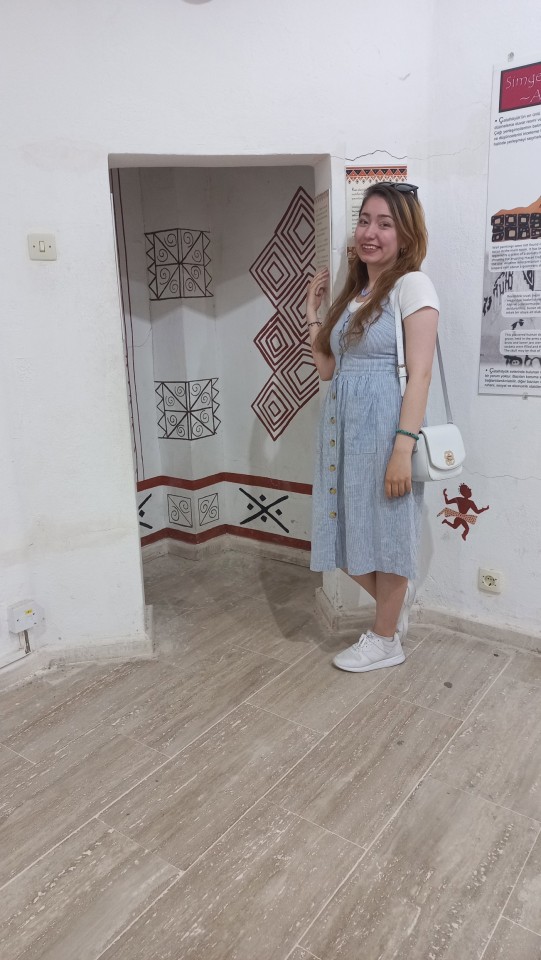#çatalhöyük
Text
Individual houses were typically in use for between fifty and 100 years, after which they were carefully dismantled and filled in to make foundations for superseding houses. Clay wall went up on clay wall, in the same location, for century after century, over periods reaching up to a full millennium. Still more astounding, smaller features such as mud-built hearths, ovens, storage bins and platforms often follow the same repetitive patterns of construction, over similarly long periods. Even particular images and ritual installations come back, again and again, in different renderings but the same locations, often widely separated in time....
as individual houses built up histories, they also appear to have acquired a degree of cumulative prestige. This is reflected in a certain density of hunting trophies, burial platforms and obsidian - a dark volcanic glass, obtained from sources in the highlands of Cappadocia, some 125 miles north. The authority of long-lived houses seems consistent with the idea that elders, and perhaps elder women in particular, held positions of influence. But the more prestigious households are distributed among the less, and do not appear to coalesce into elite neighborhoods.
a description of Çatalhöyük, a neolithic city from 7,400 bc. from the dawn of everything, by davids: graeber and wengrow.
this city remained settled for 1,500 years - "roughly the same period of time that separates us from amalafrida, queen of the vandals in .. ad 523"
#eezordalf's wisdom#the dawn of everything#david graeber#david wengrow#anthropology#paleoanthropology#books#prehistory#neolithic#Çatalhöyük#catalhoyuk#history#unfocus your eyes and let the vast maw of time take you#wizardblr#wizardposting
596 notes
·
View notes
Text
Prehistoric Mirrors from Turkey, c.6000 BCE: these are the oldest manufactured mirrors in the world, dating back about 8,000 years; they were meticulously crafted from pieces of obsidian

Two of the obsidian mirrors from Çatalhöyük (Turkey); this pair was found buried together back in 2012
At least eight of these obsidian mirrors have been found at Çatalhöyük, a Neolithic site located in Turkey. All of these mirrors date back about 8,000 years, and each one was crafted from a chunk of obsidian (volcanic glass) that was knapped into the shape of a disc and then meticulously polished with progressively finer abrasives until a smooth, slightly convex surface had been developed. Some of these mirrors can still produce remarkably clear reflections.
Sources & More Info:
The Archaeologist: World's Oldest Mirrors Found at Neolithic Çatalhöyük Site
Çatalhöyük Research Project: Archive Report from 2012 (PDF download)
Çatalhöyük Research Project: Main Website
The Past: Cyber Archaeology, How 3D Modeling is Unpeeling the Neolithic at Çatalhöyük
#archaeology#artifact#anthropology#neolithic#prehistoric#neolithic mirrors#anatolia#turkey#Çatalhöyük#human history#obsidian#volcanic glass#crafting#art#prehistoric art#human nature
620 notes
·
View notes
Text
The neolithic site of Çatalhöyük showcases a street-less ‘honeycomb city’ atop Southern Anatolian Plateau, revealing 18 layers of development. With no public buildings, its labyrinthine houses reflect a unique social structure.
Intriguingly, burials, colorful murals, clay balls, and artifacts suggest complex rituals and beliefs. UNESCO hails it as a key to understanding early settled agricultural life. Just why is it so special?
28 notes
·
View notes
Photo

Reconstruction of a domestic shrine in Çatalhüyük, Turkey
212 notes
·
View notes
Text

Rare Neolithic marble statuette from Çatalhöyük, UNESCO world heritage site.
Archaeologist Ian Hodder, leader of the 2016 Stanford excavation team that found the artifact, believes that, even though a ritual object, the figurine represents an older woman of high social status!
The craftsmanship, the anatomical details and a pragmatic knowledge of the human body leave no room for representational mistakes.
The 1 kgr figurine, wrought from recrystallized limestone between 6300 and 6000 B.C., is a very rare find.
thnx thethreerobbers
https://news.stanford.edu/2016/09/29/archaeologists-find-8000-year-old-goddess-figurine-central-turkey/
https://en.wikipedia.org/wiki/%C3%87atalh%C3%B6y%C3%BCk
#paleontology#archaeology#marble#sculpture#plus size#masterpiece#odd#research#Çatalhöyük#detail#age#theory#gif
9 notes
·
View notes
Text
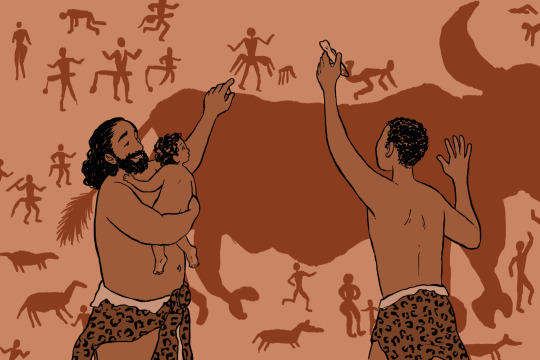
Wanted to share this piece from an abandoned project illustrating intimate daily life scenes in Neolithic Çatalhöyük
149 notes
·
View notes
Text
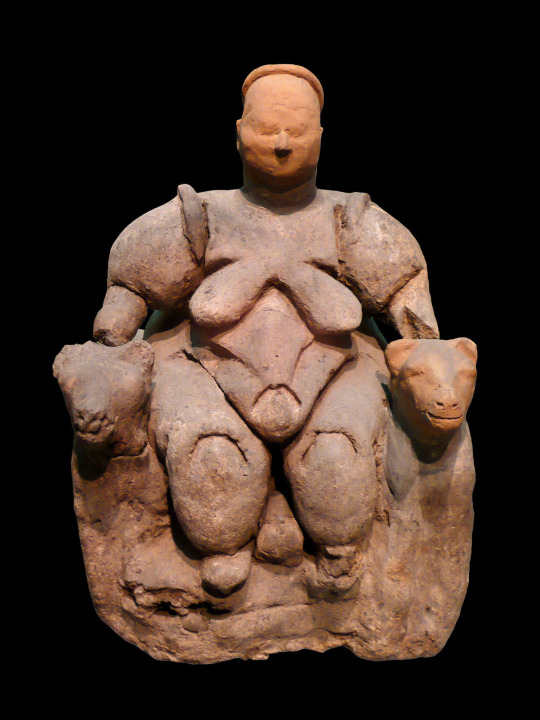
We would have done numbers in Çatalhöyük.
10 notes
·
View notes
Text

The earliest known manufactured mirrors (approximately 8,000 years old) found at the Neolithic site of Çatalhöyük in Türkiye.
These mirrors were made from obsidian (volcanic glass), and had a convex surface and remarkably good optical quality.
5 notes
·
View notes
Photo
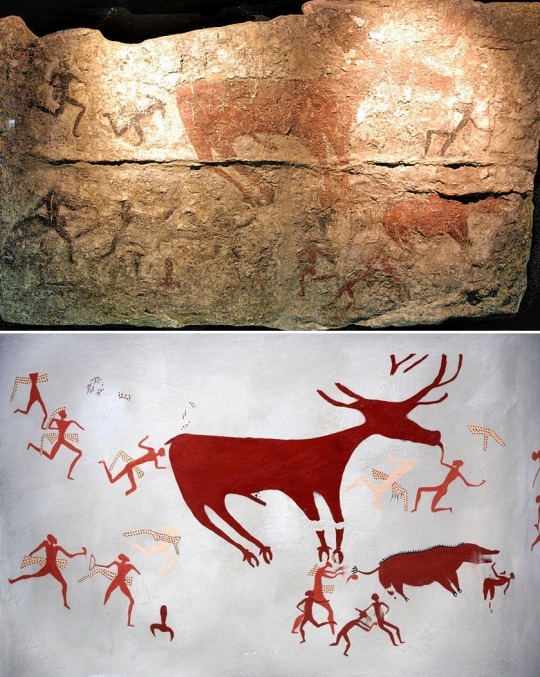
Detail of a wall painting from Level III, Catal Hoyuk (modern-day Konya, Turkey): Deer Hunt, c. 5750 BC.
Çatalhöyük is a large Neolithic “town” with a history of 9.400 years and was inhabited by approximately 8.000 people. In this big town without streets, people walked around on the roofs and entered their homes through the openings in the roofs. These people created wonderful works of art, as can be seen from the murals, reliefs, and sculptures inside their homes that have survived for thousands of years. The works of art found in Çatalhöyük shed light on the early periods when the people from Asia Minor began to live in the city.
Our designs inspired by this 7.700-year-old deer-hunting scene are available on Amazon and Redbubble. Our website: https://archaeostore.com/
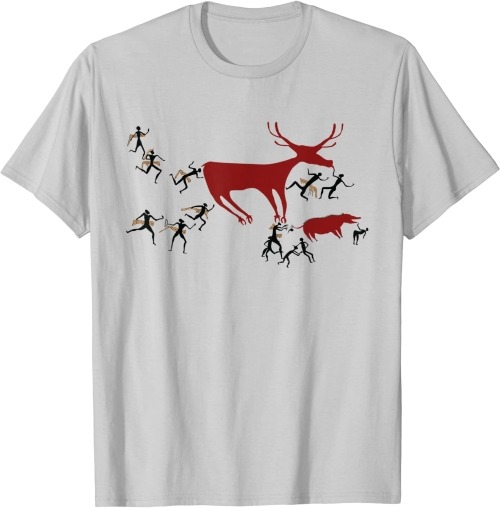
The walls of the houses in Çatalhöyük were plastered, and after the plaster was painted white, wall paintings were made in red, black, and yellow tones. These paintings are a continuation of the tradition started by the Paleolithic men who painted on the cave walls. Among the depictions painted on the walls, geometric motifs, handprints, human and animal figures (vulture, leopard, wild deer), hunting and dance scenes that may have been made for good hunting, and wall paintings reflecting the natural environment come to the forefront.
141 notes
·
View notes
Link
One of the most striking things that Larsen and his colleagues found in their examinations was an overall decline in human health. This can be blamed in part on the relatively cramped living conditions of Çatalhöyük compared to more nomadic societies. In the most extreme cases, some of these negative health consequences were caused by violence from other humans.
The team, headed by Larsen and Chrisopher Knüsel, found a number of remains with depressed fractures in their skull. Many of these injuries weren’t fatal due to signs of healing on the bones. Larsen says the injuries are likely due to attacks from others — including blows to the head with a stone. He says that the team believes the growing pressures of crowded urban life at the time may have given rise to heated interpersonal conflicts.
At its peak between roughly 6,800 and 6,600 B.C., Çatalhöyük was particularly dense, with up to 8,000 people living in an urban area estimated at about four football fields in area. The homes were built right next to each other, sharing walls somewhat like row houses today, while the farms and livestock that sustained the settlement were in the surrounding fields.
“These houses are not spread apart like what we see in cities today,” Larsen says. “They are practically living on top of each other.”
The pressures of living in close quarters might have increased psychological and social stresses due to competition for resources or personal issues. All of these factors may have triggered an increase in violence.
This uptick in violence among the proto-city's inhabitants was paralleled by a collective decline in oral health. Larsen says that his team’s research has examined hundreds of teeth unearthed in excavations at Çatalhöyük. They have noted a general average decline in the condition of the teeth of the people in Çatalhöyük as the city developed over the centuries. [...] Bioarchaeologists typically attribute this decline in healthy teeth to the increase in carbohydrates in human diets, as we began to rely more heavily on domesticated grains. In the case of Çatalhöyük, these included wheat, rye and barley. [...]
Other changes in the remains revealed that over the period that people lived at Çatalhöyük, the lifestyle changed. For example, changes in femur bones of people interred in houses revealed that inhabitants moved more as the city grew — perhaps as a result of having to travel farther to get to crops or livestock, Larsen says. They also may have had to travel farther to gather the clay they fashioned into bricks for their homes.
“They’ve depleted resources further and further from the site over time,” Larsen says.
20 notes
·
View notes
Photo

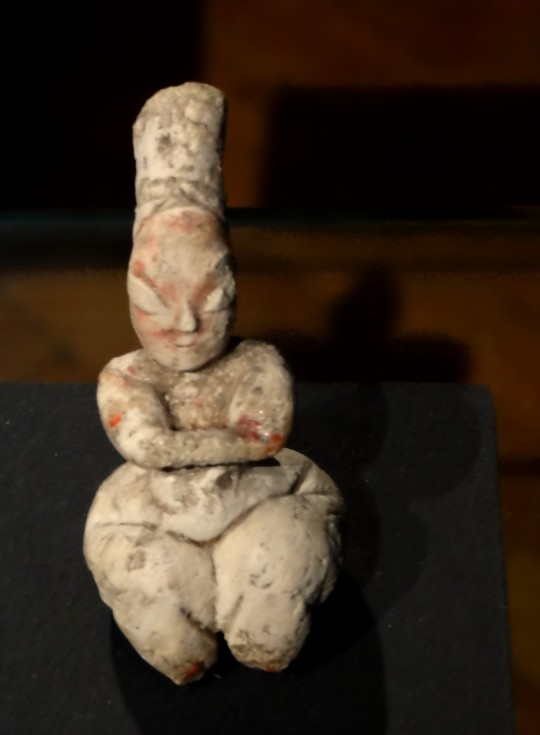
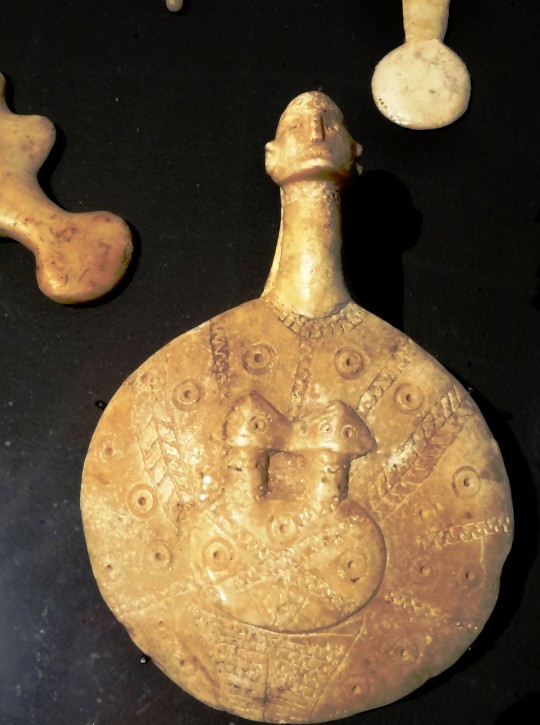

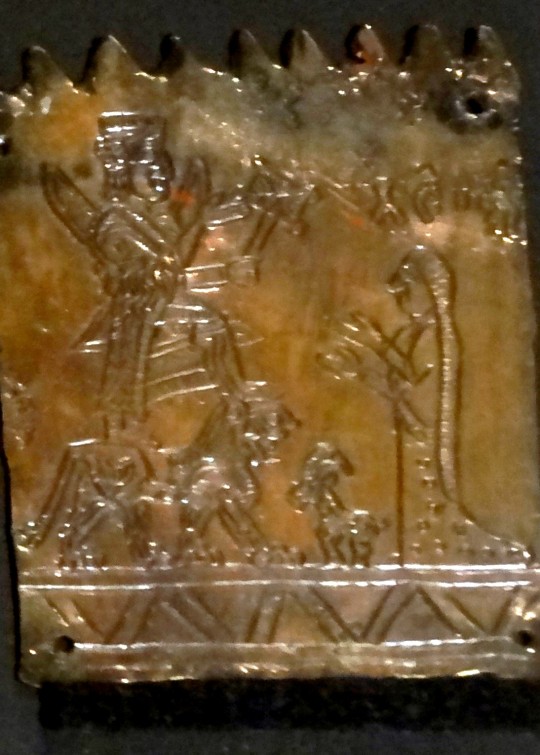
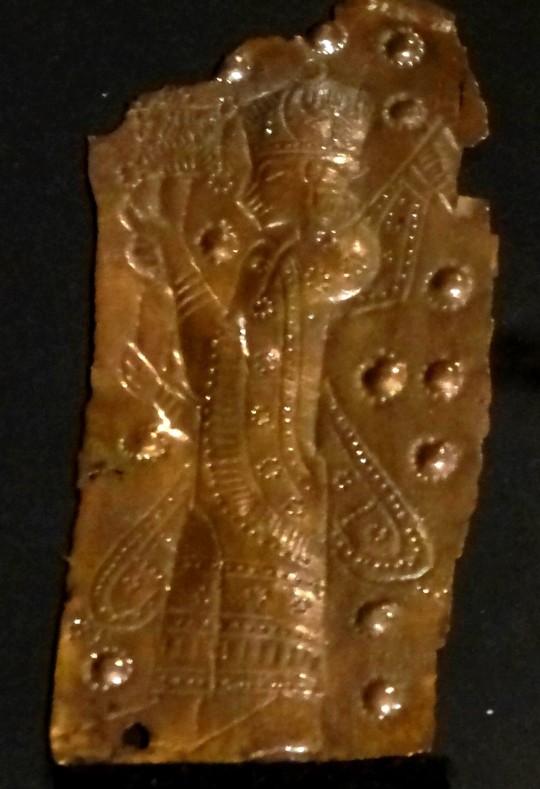
Je reviens à mon projet de présenter la plupart de mes 55000 photos (nouveau compte approximatif. On se rapproche du présent !).
2016. Une petite virée à Bruxelles avec Julien. C’était surtout pour visiter une expo sur l’Anatolie au Palais des Beaux-Arts:
- figurine - Çatalhöyük, 7000 av.J-C.
- figurine - Köşk Höyük, 5000 av.J-C.
- idole avec idole bicéphale - Kültepe, 2000 av.J-C.
- pilier aves bras fléchi - Göbekli Tepe, 10000 av.J-C.
- dieu ourartéen - Giyimli, VIIe s. av.J-C
- divinité ailée ourartéenne - VIIe s. av.J-C
#souvenirs#belgique#bruxelles#palais des beaux-arts#turquie#anatolie#archéologie#mythologie#divinité#çatalhöyük#catal höyük#köskhöyük#kösk höyük#göbekli tepe#ourartéen#ourartou#urartu#giyimli#lion
16 notes
·
View notes
Note
Do you want to tell us about iron age Çatalhöyük? I can always look it up myself if you don't, so no pressure. But if you wanted to info dump about it, I'd be fascinated at the very least.
Sure, I can do that. I might have forgotten some facts, but I'll provide some links too.
EDIT: Tumblr ate my first post, so this is my second try. Didn’t turn out as good since I wrote the first one while being in a “flow”. Sorry about that.

So, Çatalhöyük was a neolithic (stone age) settlement. Some call it a city, others a proto-city, it housed around 8000 people at its height. It's not the oldest or largest neolithic settlement, but still an important one since it shows humans going from hunter-gatherer nomads to settled farmers. People lived there for over 2000 years! From around 7400 BCE to about 5200 BCE, so a lot happened there. So why is it important? Well, I find all neolithic archaeology important, but Çatalhöyük has a rather unique architecture and it also shows the importance of art for human society.

The houses were roughly square and built back-to-back and on top of each other, meaning that there were no streets or footpaths. Instead people travelled through the rooftops and entered their homes through holes in the roofs, climbing down wooden ladders. That must have been fun for the kids, climbing around like that, though I guess they got as used to it as we get used to walking on the streets. Can't have been easy for elderly or the physically disabled though (but few lived very long though).
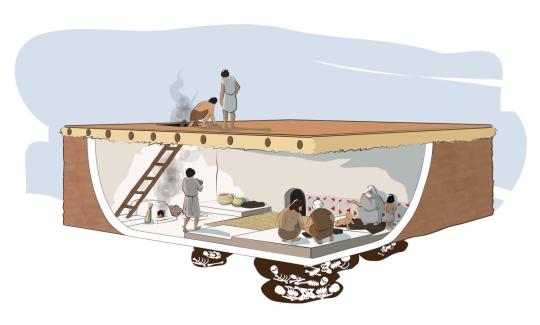
Although the homes varied a bit, the inside was generally one roof with a platform where people lived and slept with an oven under the ladder (it seemed like the entrance hole also served as an escape route for the smoke). There also seemed to have been communal ovens, which might have been used for communal gatherings. And here comes a part that some might find bizarre, but the dead were placed underneath the floor of the homes, under the platforms where they lived. Although this practice has been seen in other places too.

To the art. Most homes had wall paintings and/or relief. The most common motifs were animals, peoples and geometric shapes. Last time I read about this, there was some connection between the geometric art and the death of youth, but that theory might have changed now. The thing is, the art was everywhere, not just the paintings, but also figurines. One of the most famous figurines is that of what is believed to be a fertility goddess. Due to the amount of art found at Çatalhöyük, it’s clear that it had a significant importance to their society and it also seemed to have grown the longer the people were settled there. One theory is that when they spent less time hunting/gathering and moving around, they got more time left for art, which makes sense, even if there, of course, got new things that had to be done too (like house maintenance and husbandry).

This is just scratching on the surface of Çatalhöyük. It’s a fascinating place and if you find this post interesting, I recommend that you check out the links or maybe do some further research yourself.
LINKS
Çatalhöyük Research Project
Khan Academy Article
Archaeology and CGI: The Shrine of the Hunters at Çatalhöyük (YT vid)
#archaeology#catalhoyuk#çatalhöyük#neolithic settlements#i'm not a professional#just someone who likes archaeology#own stuff
2 notes
·
View notes
Text
Excavations at Çatalhöyük in Turkey have unveiled a remarkable medical marvel: the discovery of a young man’s skeleton, including skull displaying signs of trepanation, a radical surgical procedure.
During ongoing excavations at the 9,000-year-old Anatolian city of Çatalhöyük, a significant discovery surfaced, shedding light on the medical practices of our ancestors. Archaeologists have uncovered a young man's skeleton from a collective burial, revealing a fascinating glimpse into the ancient surgical procedures.
The skull of this individual, dating back around 8,500 years, shows a small, precisely drilled hole, evidence of an ancient surgical practice called trepanation. This radical procedure, developed during the Neolithic Period, was used for a range of conditions from headaches to mental health disorders. Imagine the skill and knowledge these ancient healers possessed to perform such intricate operations!
32 notes
·
View notes
Photo

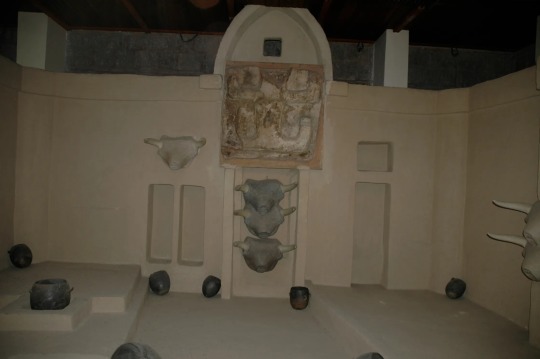
Representation of a ritual scene in Çatal Huyuk, Anatolia, we are not sure about the details of the religious life of this period, but from the archaeological remains it is believed in the prominence of a female deity and the cult of a male represented by the bull, always present in the shrines As for domestic animals like the ones in the photo, we imagine some kind of shamanist in addition to the cult of the dead, often through exhumed and often decorated skulls (a cult that still occurs today in some parts of the world).
71 notes
·
View notes
